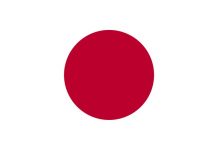| Hachimaki: | “Head wrapping.” A light cotton towel, also known as a tengui, wrapped around the forehead to restrict perspiration from running into the eyes and face. | |
| Hajime: | “Begin.” Referee’s command used to start a Japanese martial arts match. | |
| Hakama: | “Divided skirt.” The skirtlike trousers or cullotes primarily worn in kendo, aikido, iaido, and sometimes the upper ranks of judo. | |
| Hakko ryu: | A form of jujutsu in which atemi (striking) techniques are emphasized. | |
| Halberd: | A shafted weapon with an axelike cutting blade, sometimes used to describe the Chinese quando. | |
| Hanbo: | A three foot wooden staff. | |
| Hachidan: | 8th degree black belt in traditional Japanese styles. | |
| Hachimaki: | A headband, handkerchief or bandana which is often worn to prevent sweat from dripping into the eyes while working out. | |
| Hakama: | The pleated skirt worn by Aikido, Kendo, Kyudo and Iaido practitioners. | |
| Hane-goshi: | Springing hip. Judo hip technique. | |
| Hane-goshi-gaeshi: | Springing hip counter. Judo foot technique. | |
| Han mu kwan: | “Military arts school.” A style of Korean karate. | |
| Hanshi: | “Master.” A respected master, of Japanese martial disciplines, who is of eigth- to tenth-degree black belt rank, although not all masters receive this title. | |
| Hansoku gachi: | “Winner by violation.” The decision awarded in a match when an opponent has violated the rules. | |
| Hansokumake: | “Loser by violation.” A verdict against the loser when there has been a violation of the rules in a match. | |
| Hantei: | “Judgement” or “decision.” A command by the referee to the judges to choose the winner of a match when neither contestant has scored or if the score is tied. | |
| Hapkido: | “way of coordinating power.” A Korean martial art characterized by kicking without retraction and composed of three primary skills: nonresistance when meeting force, circular motion to countering and attacking, and the water principle – total penetration of an enemy’s defenses. | |
| Hara: | “Abdomen.” Gravity and mass in the human body, traditionally considered in Eastern thought to be the seat of the soul and center of ki. | |
| Haragei: | The art of concentrating ki in the abdomen; disciplines focusing on developing the tanden. | |
| Harai: | “Sweep” or “sweeping.” | |
| Harai-goshi: | Sweeping hip. Judo hip technique. | |
| Harai-goshi-gaeshi: | Sweeping hip counter. Judo foot technique. | |
| Harai-tsurikomi-ashi: | Sweeping lifting pulling foot. Judo Foot technique. | |
| Hara Kiri: | Ritual Japanese suicide with a knife, practiced by the samurai warrior. This phrase is the informal word for seppuku. | |
| Hata: | “Flag.” The flags used by referees or line persons to indicate scores, decisions, or jogai. | |
| Hauri: | Hip. | |
| Heijo-shin: | A calm and focused state of mental awareness which a warrior must have during battle. It is characterized by a relaxed and confident attitude. | |
| Hidari: | Left or left side. | |
| Hiji: | Elbow. Also known as empi. | |
| Hikiwake: | “Draw” or “tie.” Referee’s term denoting a draw in a match. | |
| Himm: | “Force” or “power.” | |
| Hirate: | Foreknuckle. | |
| Hiza: | Knee or lap. | |
| Hiza-guruma: | Knee wheel. Judo foot techniques. | |
| Hiza-geri: | Knee strike | |
| Ho goo: | Protective equipment worn by tae kwon do competitors to minimize injury while sparring. | |
| Hohup: | “Breathing.” | |
| Hojo jutsu: | The art of tying. Techniques used to tie and immobilize a victim by means of a cord. | |
| Hojutsu: | The art of firearms or gunnery. | |
| Hombu: | “Headquarters.” This term can be used to define any headquarters for a martial arts school. | |
| Hontai: | A state of mind which is cultivated by the martial artist of alert readiness | |
| Hop gar: | A style of Chinese kung fu, also known as Lama, which is composed of twelve short-hand and twelve long-hand maneuvers. | |
| Hosin sul: | Self-defense techniques. | |
| Hsing i: | “Form of mind.” An internal system of kung fu emphasizing linear movement. | |
| Hwa chuan: | “Flowery hand system.” A northern Chinese style of kung fu. | |
| Hung gar: | A major style of southern Chinese kung fu characterized by very hard, strong techniques and stable horse stances. | |
| Hwarang: | A band of Korean warriors who, much like the Japanese samurai, adhered to strict philosophical and moral codes. | |
| Hwarang do: | “Way of the flower of manhood.” A native Korean philosophical code similar to Japanese bushido and possessing a structured series of physical techniques that were advocated by warriors known as the hwarang. | |
| Hyung: | “Pattern,” “form,” or “mold.” A series of prearranged offensive and defensive movements executed against imaginary attacking opponents. Also known as katas or poomse. |






